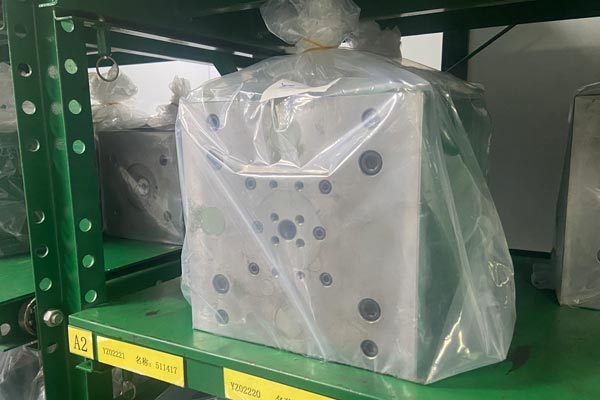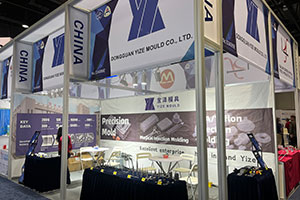How to Prevent Corrosion of Tungsten Carbide Dies
I. Introduction Tungsten carbide dies play a crucial role in industrial production due to their high hardness, excellent wear resistance, and outstanding mechanical properties. However, during their use, these dies […]
I. Introduction
Tungsten carbide dies play a crucial role in industrial production due to their high hardness, excellent wear resistance, and outstanding mechanical properties. However, during their use, these dies often face the problem of corrosion, especially in harsh environments such as those that are humid, acidic, or alkaline, where the corrosion phenomenon is even more severe. Corrosion not only reduces the precision and performance of the dies but also shortens their service life and increases production costs. Therefore, researching corrosion prevention technologies for tungsten carbide dies is of great significance for improving the service life of the dies and reducing production costs. This article will explore the causes of corrosion in tungsten carbide dies, corrosion prevention measures, and their practical applications.
II. Causes of Corrosion in Tungsten Carbide Dies
Environmental Factors
During the use of tungsten carbide dies, they frequently come into contact with various corrosive media, such as acids, alkalis, salts, and water. These media react chemically with the surface of the dies, leading to corrosion on the die surface. Moreover, a humid environment accelerates the corrosion process.
Notre activité : pièces en carbure, pièces de moule, moules d'injection médicale, moules d'injection de précision, moulage par injection de téflon PFA, raccords de tubes PFA. email : [email protected],whatsapp:+8613302615729.
Material Factors
The material of tungsten carbide dies contains certain impurities and defects, which significantly reduce the corrosion resistance of the dies. Additionally, different grades of tungsten carbide materials exhibit varying degrees of corrosion resistance.
Usage and Maintenance Factors
During the use of the dies, their surfaces may suffer mechanical damage and scratches, which destroy the protective layer on the die surface and reduce its corrosion resistance. Furthermore, improper maintenance and upkeep, such as inadequate cleaning and improper storage conditions, also exacerbate the corrosion of the dies.

III. Corrosion Prevention Measures for Tungsten Carbide Dies
Select Tungsten Carbide Materials with Good Corrosion Resistance
When manufacturing tungsten carbide dies, it is advisable to choose materials with excellent corrosion resistance. Generally, tungsten carbide materials with high carbon, high tungsten, and low cobalt content have better corrosion resistance. Additionally, according to the specific use environment and requirements, special corrosion-resistant tungsten carbide materials can be precisely selected to enhance the corrosion resistance of the dies from the source.
Apply Advanced Surface Treatment Technologies
Surface treatment technologies are key means to improve the corrosion resistance of tungsten carbide dies. Common methods include coating, plating, and oxidation.
- Coating Technology: A layer of corrosion-resistant coating, such as ceramic coating or polymer coating, is applied to the surface of the dies. This coating acts as a sturdy shield, effectively isolating the corrosive media from the die surface and significantly improving the corrosion resistance of the dies.
- Plating Technology: Through processes such as electroplating and chemical plating, a layer of metal plating, such as nickel, chromium, or zinc, is formed on the die surface. The metal plating not only has excellent corrosion resistance but also offers good adhesion and wear resistance, providing comprehensive protection for the dies.
- Oxidation Technology: By oxidation treatment, a dense oxide film is formed on the die surface. This oxide film serves as a natural barrier, preventing the corrosive media from directly contacting the die substrate and thus enhancing the corrosion resistance of the dies.
Use and Maintain the Dies Scientifically and Reasonably
Scientific and reasonable use and maintenance are the core aspects of ensuring the corrosion resistance of tungsten carbide dies. During use, it is necessary to avoid direct contact between the dies and corrosive media as much as possible and strictly control the usage time of the dies in harsh environments. At the same time, care should be taken during operation to prevent mechanical damage and scratches on the die surface, which could destroy the protective layer. In terms of maintenance, the dies should be regularly cleaned, thoroughly inspected, and carefully maintained to promptly detect and properly handle potential corrosion problems.
Add Corrosion Inhibitors
When manufacturing tungsten carbide dies, a certain amount of corrosion inhibitors, such as rare earth elements and carbides, can be added. These inhibitors can optimize the microstructure of the tungsten carbide material, improve its properties, and thereby enhance the corrosion resistance of the dies, providing strong support for their long-term stable operation.
Optimize the Working Environment of the Dies
Optimizing the working environment is an effective way to reduce the corrosion degree of tungsten carbide dies. For example, when using dies in a humid environment, effective measures should be taken to reduce the environmental humidity. In environments with a large amount of corrosive media, reliable protective measures, such as installing isolation covers and applying anti-corrosion coatings, should be set up to create a relatively safe working environment for the dies.
IV. Practical Applications of Corrosion Prevention Technologies for Tungsten Carbide Dies
Wide Application of Coating Technology
Coating technology is widely used in the corrosion prevention of tungsten carbide dies due to its simplicity, effectiveness, and low cost. For instance, in injection molding dies, the application of ceramic coating technology significantly improves the corrosion resistance and wear resistance of the dies, greatly extending their service life and saving a large amount of costs for enterprises.
Common Adoption of Plating Technology
Plating technology is also highly favored in the corrosion prevention of tungsten carbide dies because of its good adhesion and wear resistance. In stamping dies, the use of electroplated nickel technology forms a dense nickel plating layer on the die surface, effectively improving the corrosion resistance and wear resistance of the dies and ensuring their stable operation under complex working conditions.
Successful Practice of Optimizing the Working Environment
Optimizing the working environment has achieved remarkable results in reducing the corrosion degree of tungsten carbide dies. In the semiconductor manufacturing field, where the production environment has extremely strict requirements for die corrosion, enterprises have effectively reduced the corrosion degree of the dies by setting up isolation covers and applying anti-corrosion coatings, ensuring the smooth progress of production.
V. Conclusion
Corrosion prevention technologies for tungsten carbide dies are crucial for improving the service life of the dies and reducing production costs. By carefully selecting tungsten carbide materials with excellent corrosion resistance, skillfully applying advanced surface treatment technologies, using and maintaining the dies scientifically and reasonably, and actively optimizing the working environment, the corrosion resistance of tungsten carbide dies can be significantly improved. In practical applications, appropriate corrosion prevention technologies should be precisely selected according to the specific use environment and requirements to ensure the stable operation and long-term use of the dies, providing a solid guarantee for the efficient development of industrial production.






